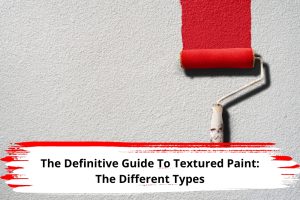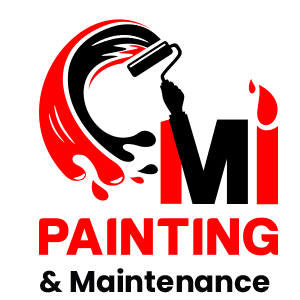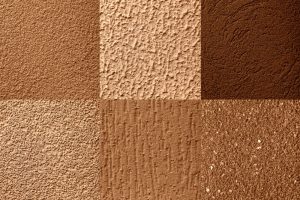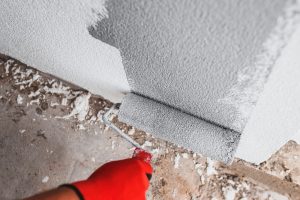The Definitive Guide to Textured Paint: The Different Types

Have you entered a room before and been amazed by the unique textured paint of the walls? That’s the magic of textured paint. But what exactly is it? Think of it as fancy paint that adds dimension and character to your space.
Regular paint gives you a flat, smooth finish. Conversely, textured paint comes in all sorts of fun variations that can make your walls look like stone, stucco, or even fabric!
So, why should you consider textured paint for your home? Buckle up because this guide will dive into the amazing world of textured paint, starting with what it is and all the different types you can choose from.
What is textured paint?
Up your walls with some texture! This kind of paint is regular paint with some cool extras, like sand or tiny rocks. These make the paint bumpy and exciting instead of just flat and dull.
Why use textured paint? It’s not just for looks (although it can definitely make a room pop). It can also hide minor imperfections in your walls, making the paint job extra tough. So, it’s a win-win for creating beautiful and robust walls, whether at home or in the office.
What are the benefits of using textured paint?
- Spice up your walls: Sick of staring at those bland walls? Textured paint is a fantastic decorative paint finish that can turn boring walls into bosses! With tons of styles, from chill and rustic to sleek and modern, there’s a perfect texture to match your mood.
- Covers imperfections: Do your walls have a few dents or cracks? Textured paint is excellent at concealing these imperfections. The texture can mask minor flaws, making your walls look flawless without extensive repairs.
- Built to last: Textured paint isn’t just about looks; it’s tough, too. The texture helps it resist scratches, scuffs, and all the other bumps and bruises your walls experience, making it a great choice for busy areas of your house.
Top 10 different types of textured paint
The world of textured paint is a diverse landscape. Here is a breakdown of some popular types and their characteristics:
- Sand textured paint: This paint has tiny sand bits in it, giving your walls a rough, beachy feel. Great for living rooms, hallways, or accent walls.
- Popcorn texture: This bumpy texture, often called popcorn ceilings, was everywhere in older houses, but not so much anymore. It can contain asbestos, so avoid painting over popcorn ceilings unless you’re sure it’s safe. Also, these are mainly used on ceilings for soundproofing these days, but many homeowners prefer a smoother look.
- Knockdown texture: This one’s a little messy! You spread on a thick layer of stuff, then use a tool to knock down some of the bumps. You can go for a subtle texture or a more dramatic one. It works in most rooms and adds a classic touch.
- Orange peel texture: Imagine an orange peel – that’s the kind of texture this paint gives. It’s a bit rough and uneven, making it perfect for hiding small mistakes in kitchens and bathrooms.
- Venetian plaster: This high-end option gives walls a smooth, polished look with a hint of texture. Perfect for living rooms or dining rooms if you want a fancy vibe.
- Metallic textured paint: This paint has shimmery metallic flakes that make any room feel modern and glam.
- Slap brush texture: This playful technique involves slapping a paintbrush against the wall to create a random, artsy design. Fun for a unique look!
- Suede and fabric textures: Imagine soft, velvety walls! That’s what you get with suede and fabric-textured paints. Great for bedrooms, nurseries, or home theatres for a cozy feel.
- Spray-on textures: These handy spray cans come in textured finishes like stucco or sand. They’re convenient, but getting a smooth texture can be tricky, especially for beginners.
- Smooth-textured paint: Want a hint of texture without going overboard? Smooth-textured paint adds a touch of depth to your walls without being too noticeable.
How to apply textured paint
- Getting ready: Before applying that excellent texture, you have to ensure your walls are prepared for it. Think of it like prepping a canvas for a masterpiece! Give those walls a good scrub-a-dub-dub and patch any holes. Then, apply a coat of primer—it helps the texture stick like glue.
- Tools of the trade: While a fancy paint sprayer or a mini wall shovel can help apply certain textured paints, creating a textured effect with a paintbrush is totally possible! Grab your brushes and any other tools you might need before you get started.
Step-by-Step application
- Prime the walls: First, paint them with primer and let them dry completely.
- Mix the paint: Prepare your paint and texture medium. Follow the instructions on the can (don’t worry—it’s usually pretty easy!) to mix them perfectly.
- Apply the texture: Grab your chosen tool (sprayer, trowel, or brush) and apply that texture! Take it slow and work in small sections to ensure everything looks even.
- Let it dry: Once you’ve applied the texture, let it dry completely before adding any fancy topcoats (if you want one).
Conclusion
Textured paint is a game-changer! It lets you turn boring flat walls into something awesome with great depth. Once you know the different types of textured paint and how to use them, you can unleash your inner artist and create a totally unique look for your space.
Feeling adventurous? Grab your tools and get texturin’! Not your thing? No worries, you can always call in the pros to make those textured dreams a reality.
Level up your walls!
Want to ditch the boring walls and add some texture to your life? Mi Painting & Maintenance can help! We’re your interior painting pros, ready to transform your space with cool textured finishes. Sand beaches on your walls? We got you. Fancy Venetian plaster? No sweat! Don’t be stuck with flat walls; unleash your inner artist with Mi Painting & Maintenance! Call for a free quote, and let’s get texturin’!


